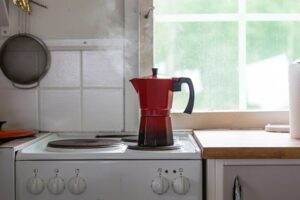Having a functional dishwasher is essential in both household and commercial settings. It saves time and effort by efficiently cleaning and sanitizing dishes, utensils, and cookware. However, like any other appliance, dishwashers can encounter problems that hinder their performance. These issues can range from minor inconveniences to major malfunctions that require professional repair. In this article, we will explore the basics of dishwasher functionality, common problems that can arise, and how to troubleshoot and repair these issues.
Key Takeaways
- Dishwashers clean dishes by spraying hot water and detergent onto them.
- Common dishwasher problems include leaks, strange noises, and failure to clean dishes properly.
- Tools needed for diagnosis include a multimeter, pliers, and a flashlight.
- Checking the power supply involves testing the outlet and the dishwasher’s power cord.
- Examining the water supply involves checking the water inlet valve and the dishwasher’s water line.
Understanding the Basics of Dishwasher Functionality
Dishwashers work by spraying hot water and detergent onto the dishes to remove food particles and stains. They consist of several components, including a water inlet valve, pump and motor assembly, heating element, control panel, filters, spray arms, and drainage system. The water inlet valve allows water to enter the dishwasher, while the pump and motor assembly circulate the water and spray it onto the dishes. The heating element heats the water to the desired temperature for effective cleaning. The control panel allows users to select different wash cycles and settings. Proper maintenance is crucial to ensure optimal functionality of these components.
Identifying Common Dishwasher Problems
There are several common problems that can occur with dishwashers. These include:
1. Dishwasher not turning on: This can be caused by a faulty power supply or a malfunctioning control panel.
2. Poor cleaning performance: If dishes are not coming out clean after a wash cycle, it could be due to clogged filters or spray arms, low water pressure, or a malfunctioning pump and motor assembly.
3. Leaking water: Leaks can occur due to damaged door seals or gaskets, loose connections in the water supply or drainage system, or a cracked tub.
4. Noisy operation: Excessive noise during operation can be caused by a worn-out pump and motor assembly, loose components, or foreign objects stuck in the dishwasher.
5. Foul odor: If the dishwasher has a persistent foul odor, it may be due to food particles trapped in the filters or spray arms, or a buildup of bacteria and mold.
Gathering the Right Tools for Diagnosis
Before attempting any repairs, it is important to gather the necessary tools for diagnosis. Some essential tools include:
1. Screwdrivers: Both Phillips and flathead screwdrivers may be needed to remove screws and access different parts of the dishwasher.
2. Multimeter: A multimeter is used to test electrical components and check for continuity.
3. Pliers: Pliers are useful for gripping and manipulating small parts or removing stubborn connections.
4. Wrenches: Adjustable wrenches may be needed to loosen or tighten connections.
5. Flashlight: A flashlight can help illuminate hard-to-see areas inside the dishwasher.
Checking the Dishwasher’s Power Supply
If the dishwasher is not turning on, the first step is to check the power supply. Start by ensuring that the dishwasher is plugged in properly and that the outlet is functioning. If there is power at the outlet, but the dishwasher still does not turn on, check the circuit breaker or fuse box to see if a breaker has tripped or a fuse has blown. Resetting the breaker or replacing the fuse may solve the problem. If these steps do not resolve the issue, it may be necessary to test the power supply using a multimeter or seek professional help.
Examining the Dishwasher’s Water Supply

If the dishwasher is not filling with water or there is low water pressure, it is important to check the water supply. Start by ensuring that the water supply valve to the dishwasher is fully open. If it is closed or partially closed, open it completely and check if water flows into the dishwasher. If there is still no water flow, check for kinks or blockages in the water supply hose. If the hose is clear and the water supply valve is open, the issue may be with the water inlet valve or the float switch. These components may need to be tested and replaced if necessary.
Inspecting the Dishwasher’s Drainage System
If the dishwasher is not draining properly or there is standing water at the bottom of the tub, it is important to inspect the drainage system. Start by checking for clogs or blockages in the drain hose and air gap (if applicable). Clear any debris that may be obstructing the flow of water. If the drain hose and air gap are clear, check the drain pump for any obstructions or damage. The impeller inside the pump should spin freely. If it is stuck or damaged, it may need to be replaced. Additionally, check the drain solenoid or check valve for proper operation.
Evaluating the Dishwasher’s Filters and Spray Arms
Clogged filters and spray arms can lead to poor cleaning performance and other issues. To evaluate the dishwasher’s filters, remove them from their housing and inspect them for debris or damage. Clean them thoroughly under running water and ensure they are free from any blockages. The spray arms should also be inspected for clogs or damage. Remove them from their mounts and clean out any debris that may be obstructing the spray nozzles. If the filters or spray arms are damaged, they may need to be replaced.
Testing the Dishwasher’s Heating Element
If the dishwasher is not heating properly, it may be due to a faulty heating element. To test the heating element, start by disconnecting power to the dishwasher. Use a multimeter to test for continuity across the terminals of the heating element. If there is no continuity, it indicates a faulty heating element that needs to be replaced. It is important to note that some dishwashers have a separate heating element for drying, so it is necessary to test both elements if applicable.
Examining the Dishwasher’s Control Panel
If the dishwasher’s control panel is not functioning properly or buttons are unresponsive, it may be necessary to examine the control panel. Start by checking for loose connections or damaged wires behind the control panel. If everything appears to be in order, the control panel itself may be faulty and need to be replaced. It is important to consult the dishwasher’s manual or seek professional help for specific instructions on accessing and replacing the control panel.
Troubleshooting and Repairing Common Dishwasher Issues
When troubleshooting and repairing common dishwasher issues, it is important to follow a systematic approach and take safety precautions. Start by identifying the problem and gathering the necessary tools for diagnosis. Then, proceed to check the power supply, water supply, drainage system, filters, spray arms, heating element, and control panel as outlined in the previous sections. If a specific component is found to be faulty, it may need to be repaired or replaced. It is important to consult the dishwasher’s manual or seek professional help for specific instructions on repairing or replacing components.
Proper maintenance and timely repairs are crucial for ensuring the optimal functionality of dishwashers. By understanding the basics of dishwasher functionality and common problems that can arise, homeowners and technicians can troubleshoot and repair these issues effectively. However, it is important to prioritize safety precautions and seek professional help if needed. By using the information provided in this article, readers can take steps towards maintaining and repairing their own dishwashers or making informed decisions when seeking professional assistance.
Looking for more information on dishwasher repairs and maintenance? Check out the article “Common Dishwasher Problems and How to Fix Them” on our website. This comprehensive guide provides step-by-step instructions for diagnosing and troubleshooting common issues with dishwashers. From clogged filters to malfunctioning pumps, this article covers it all. Don’t let a faulty dishwasher ruin your day – visit our website and learn how to fix it yourself! Read more
How Can I Ensure the Safety of Myself and Others While Diagnosing Dishwasher Issues?
When diagnosing dishwasher issues, it’s important to follow safety measures for dishwasher troubleshooting to ensure the safety of yourself and others. Always disconnect the power supply before conducting any inspections or repairs. Use insulated tools and wear protective gloves to avoid electric shocks and injuries.



